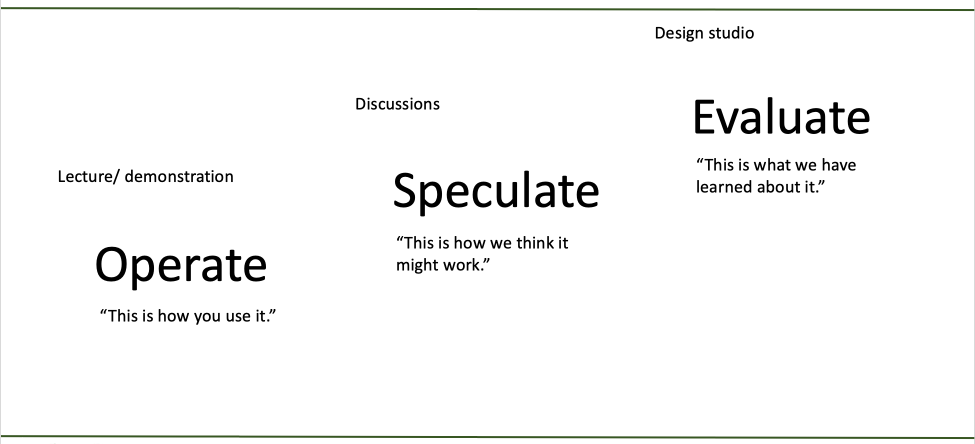This is a continuation of the Training, Learning, Design post.
This theme continues as well in the post Design Defined.
We know educators need three types of support when they are creating technology-rich teaching and learning. Previously, I introduced training, learning and design as the types and each is labeled based on the focus of the interaction (specifically the degree to which students are included in the plans) and the role of the technology expert.

I also tend to use the terms “operate,” speculate,” and “evaluate” to describe training, learning, and design. In training, we seek to ensure teachers (or others) understand how to operate hardware, software, or user interfaces. It is often well-suited to lectures or other demonstrations in classroom settings.
In learning, we support educators as they think about how they predict the technology will be useful in their classroom. As this is initial planning, we can accurately conclude teachers are speculating about the effects of the technology. This is often accomplished by teachers discussing their ideas in a seminar setting.
In design, we support educators who are developing the resources and materials to implement what focus their speculation; they then return to evaluate their initial designs and continue the design process through additional iterations. School and technology leaders can create a design studio to support this work.